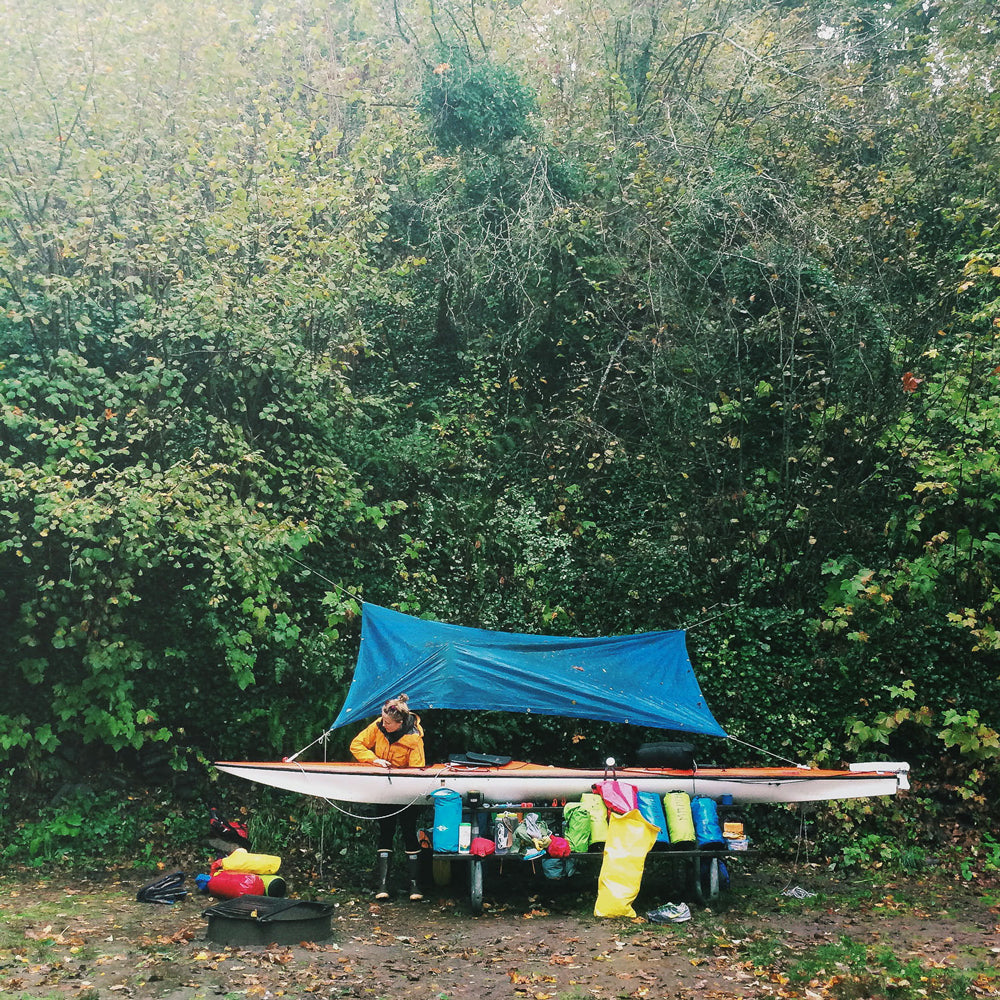A BioLite Special Guest Post by Climber, Mountaineer, and Adventure Writer Charlotte Austin. Photos contributed by Bryan Aulick.
In October 2014, I led an expedition along the Lower Columbia River Water Trail (CRWT) a 146-mile journey between the Bonneville Dam and the Pacific Ocean. In 7 days, our team of five paddlers—which included a writer (me!), a photographer, and an environmental scientist—camped on uninhabited islands, explored urban waterways, and traced the footsteps of Lewis and Clark.
As we were paddling, we were posting photos. Ecotrust had arranged for us to do a week-long Instagram takeover, which was a great opportunity—but it also required us to keep our phones charged. Luckily, we packed our BioLite CampStove Bundle, which was great for cooking and keeping our various devices full of juice. (If you’re interested in what else we packed, the full gear list is here.


We put our kayaks in the water at Beacon Rock (just west of the Bonneville Dam) and paddled through the Columbia River Gorge toward Portland and Vancouver, then turned toward the ocean as we made our way through the Lewis and Clark National Wildlife Refuge. The weather was laughably bad—the guidebook specifically says that October and November are great months to explore the Columbia, because there’s very little boat traffic, but the rain we battled was ridiculous. By day two, we were so wet that we passed the time by inventing new terms for whole-body athlete’s foot.
Our most memorable meal was at the end of our second day on the river. We’d paddling through violent rain and sleet and hail, and the weather showed no sign of easing up as the afternoon turned to dusk. We were more than ten miles short of our planned campsite for the night, but after a quick group huddle, we decided to make camp wherever we could find protection. We paddled to the nearest beach, stashed our boats, and looked for a dry place to camp. The shoreline was boggy and wet and covered in marshlands, and things were looking dire—until we stumbled across a train underpass. It wasn’t glamorous, but it was the driest place around, so we set up camp under the railroad tracks. Ten minutes later, we were cooking dinner: a vegetable curry on our BioLite stove! There were some long days on the river, but it’s hard to be too grumpy when you’re eating a hot meal.



We had planned to end at Fort Clatsop, which was the winter encampment for the Corps of Discovery from December 1805 to March 1806, but due to logistics we pulled our kayaks out of the water in Astoria (four miles inland from the Pacific coast). We saw eagles and salmon and sea lions, and we met some delightful strangers who are now friends. Most of all, we reminded ourselves that adventure can be found anywhere—even in our own backyard. Lesser-known urban adventures are easy to under-estimate, especially when a quick glance through social media shows friends exploring every continent. Wanderlust is contagious, and I’m always tempted to cash in my frequent flier miles and head to whatever beach is featured on the newest magazine covers. But when I take the time to slow down, look carefully at what’s around me, and really breathe in each moment, I’m always rewarded—even when I’m less than 200 miles from home.
If you’re interested in hearing more about our adventure, we have several upcoming slideshows scheduled in the Pacific Northwest. The Lower Columbia Estuary Partnership is nonprofit organization that works to protect the river, and they’ll be handing out information at our slideshow this week at the Patagonia store in Portland, Oregon. Otherwise, check out some of the photos that we posted from the river —and stay tuned for the next adventure.
Charlotte Austin is a writer, editor, and mountain guide who lives in Seattle, Washington. Read more about her adventures on her website: www.charlotteaustin.com.


